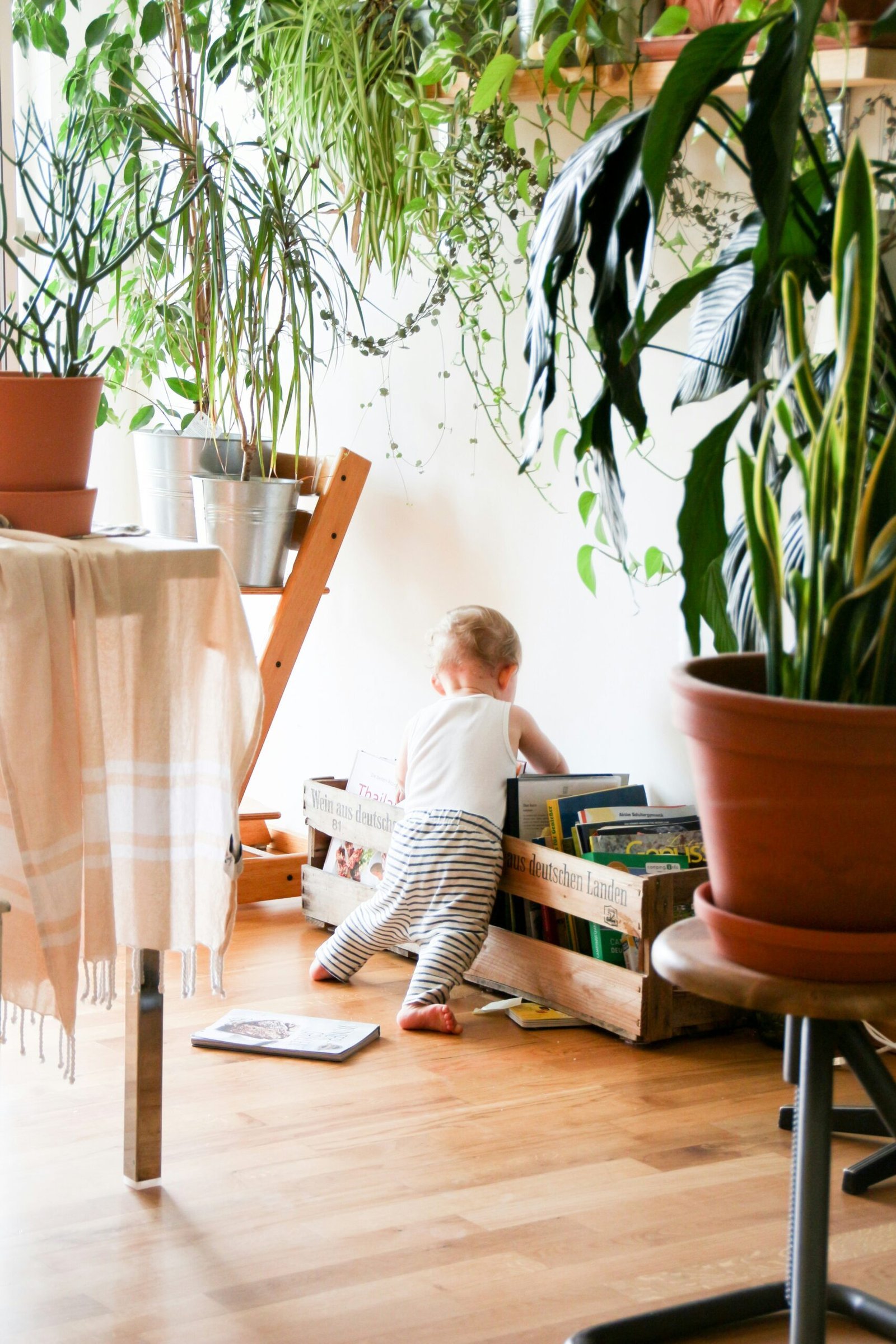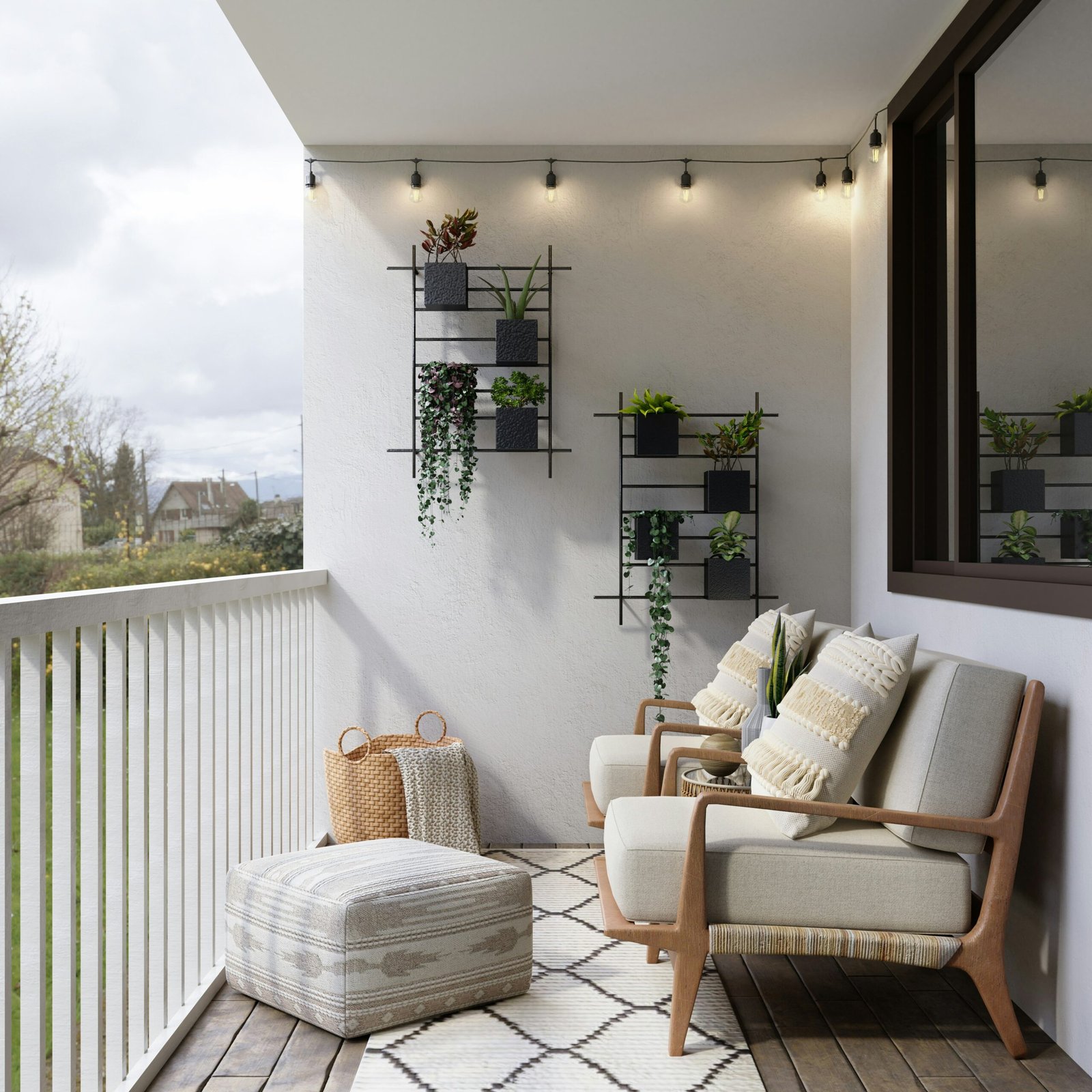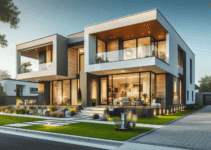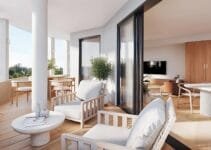Explore the essence of Nordic design, a style rooted in simplicity, functionality, and a harmonious connection with nature. Discover key features of small family homes that enhance comfort and usability through efficient space usage, sustainable practices, and serene color palettes. Learn how to create a cozy atmosphere with natural materials, innovative storage solutions, and effective lighting strategies. Delve into inspiring case studies showcasing the beauty of modern Nordic living and gather insights to transform your own home into a dreamy family retreat that reflects your unique style.

Introduction to Nordic Design
Nordic design, rooted in the rich cultural heritage of Scandinavia, embodies a harmonious blend of simplicity, functionality, and minimalism. Originating from countries such as Sweden, Norway, Denmark, Finland, and Iceland, this design philosophy emphasizes the beauty of natural materials and the importance of light, both of which contribute significantly to creating serene living environments ideal for small family homes. The essence of Nordic design can be traced back to the region’s unique climatic conditions, where long, dark winters necessitate well-lit, inviting spaces that promote warmth and comfort.
The hallmark of Nordic architecture and interior design is its prioritization of functionality over excessive ornamentation. This pragmatic approach ensures that each element serves a purpose while maintaining an aesthetic that is clean and uncluttered. Furniture pieces often exhibit a minimalist silhouette, crafted from sustainable materials such as wood, leather, and wool, which not only emphasizes durability but also helps create a cozy atmosphere. The use of basic yet elegant designs encourages an airy feel within spaces, making them ideal for smaller homes that require efficient use of space.
Please read our article watch the newly uploaded video from our YouTube channel:
“Grig Stamate – Interior Design Solutions”
https://www.youtube.com/@GrigStamate
Small Dreamy Family Homes [NORDIC STYLE] #5(video)
Here, you can see other related videos from our channel:
Small Dreamy Family Homes [NORDIC STYLE] #3 (video)
Small Dreamy Family Homes [NORDIC STYLE] #4 (video)
Another critical aspect of Nordic design is its focus on the interplay of color and light. Light, which can be scarce in Scandinavian winters, is deliberately integrated into homes through large windows and open floor plans that allow for natural light to flow freely. The choice of color palettes typically leans toward soft, muted tones, ranging from whites and grays to earthy shades, which enhance the tranquil ambiance and evoke a sense of peace and relaxation. This philosophy not only makes small family homes more inviting but also resonates with the Scandinavian ethos of ‘hygge,’ embodying a lifestyle centered around comfort and contentment.
Key Features of Small Nordic Homes
Small Nordic homes are characterized by a unique design philosophy that prioritizes simplicity, functionality, and a harmonious connection with nature. Among the most prominent features of these homes is the open floor plan, which creates an airy and spacious environment. This design choice not only maximizes the use of space but also encourages interaction among family members, reinforcing a sense of togetherness in a cozy setting.
Another defining characteristic of small Nordic homes is the incorporation of large windows. These expansive openings invite ample natural light into the living spaces, fostering a bright and inviting atmosphere. This conscious design decision not only enhances indoor environments but also aids in blurring the lines between the interior and exterior, allowing residents to enjoy the beauty of the surrounding landscapes from the comfort of their homes.
The use of natural materials is integral to small Nordic housing, with wood and stone taking center stage. The choice of these materials offers durability and functionality while also adding warmth and character to the spaces. Wood, in particular, is often used for flooring, beams, and furniture, contributing elements of nature that resonate with the aesthetic of Scandinavian design. Stone accents, whether used in wall features or fireplace surrounds, further enrich the texture and visual appeal, embodying the essence of Nordic living.
Furthermore, the color palettes in small Nordic homes tend to favor muted tones, such as soft whites, grays, and pastel shades. These colors not only evoke a sense of calm but also enhance the feeling of lightness within the home. This restrained use of color complements the overall design ethos, promoting a serene and tranquil atmosphere where families can relax and unwind.
In conclusion, the distinctive features of small Nordic homes—open floor plans, large windows, natural materials, and muted color palettes—collectively create a warm and inviting living environment that fosters a deep connection to the natural world.
Efficient Use of Space
In Nordic style homes, where space is often limited, efficient use of space becomes a fundamental principle in both design and functionality. This design philosophy encourages the implementation of multifunctional furniture that can serve various purposes while maintaining a minimalist aesthetic. For instance, a sofa can transform into a bed, while a dining table may double as a workspace. Such innovations not only optimize the available area but also elevate the overall living experience in small homes.
Storage solutions play a pivotal role in creating an organized and clutter-free environment. In many Nordic homes, there are cleverly designed built-in shelves and cabinets that utilize vertical space effectively, ensuring that every inch is used wisely. Additionally, under-bed storage, wall-mounted solutions, and hidden compartments are common features that contribute to enhancing spatial efficiency. These storage techniques help families store everyday items conveniently while maintaining the aesthetic appeal synonymous with Nordic design.
The layout of Nordic homes is equally important in creating a sense of openness and spaciousness. Open-plan living areas, which combine kitchen, dining, and living spaces, are frequently adopted. This design strategy minimizes barriers, allowing natural light to flow freely and giving an illusion of a larger area. Furthermore, the use of light colors in wall paint and furnishings amplifies the effects of sunlight and adds to the airy feel, making homes feel more expansive than they really are.
Lastly, the integration of elements that promote flexibility and adaptability is essential in Nordic homes. Modular furniture, which can be rearranged to suit different activities or family sizes, exemplifies this well. By thoughtfully employing these space-saving strategies, Nordic-style homes successfully exemplify a harmonious blend of functionality and comfort, proving that small living spaces can indeed be inviting and practical.
Sustainable Practices in Nordic Architecture
Nordic architecture is increasingly recognized for its commitment to sustainability, an essential aspect that resonates deeply within the region’s design philosophy. Eco-friendly materials play a crucial role in creating small, dreamy family homes that minimize environmental impact. Commonly used materials include sustainably sourced timber, which is not only renewable but also boasts excellent insulation properties, contributing to energy efficiency. The use of natural materials, such as stone and clay, further supports this commitment by ensuring that homes blend harmoniously with their surroundings while minimizing carbon footprints.
Energy-efficient building practices are fundamental in Nordic home design. Techniques such as passive house construction optimize natural light and airflow, reducing reliance on artificial heating and cooling systems. This approach aligns seamlessly with the minimalistic ethos prevalent in Nordic architecture, where every element is thoughtfully considered. The focus on compact designs enhances energy conservation, allowing families to live comfortably while consuming fewer resources. Insulation techniques and triple-glazed windows, prevalent in these homes, not only improve thermal performance but also ensure a quieter living environment, an often overlooked feature in residential design.
The integration of renewable energy sources is another hallmark of Nordic architecture. Many homes incorporate solar panels and wind turbines, harnessing the region’s natural elements to generate clean energy. This not only reduces household energy costs but also promotes a sustainable lifestyle that reflects a deep respect for nature. The relationship between sustainability and the minimalist ethos is evident: both prioritize functionality and efficiency without sacrificing aesthetic appeal. By embracing these sustainable practices, small family homes in the Nordic region exemplify a harmonious balance between modern living and environmental responsibility.
Color Schemes and Decor Trends
In the realm of Nordic style, color schemes play a pivotal role in establishing the signature soothing ambiance that these homes are renowned for. One of the hallmark features of Nordic homes is their predominant use of neutral tones. Soft whites, gentle beiges, and muted greys create a serene backdrop that encourages relaxation and tranquility. These subdued hues reflect natural light beautifully, making spaces feel airy and expansive, even in smaller family homes.
To complement the neutral palette, pastel accents have emerged as a popular decor choice in contemporary Nordic homes. Colors such as pale blues, soft pinks, and light greens can be integrated through decorative pillows, art pieces, or even furniture. These subtle pops of color not only add visual interest but also imbue a sense of comfort and warmth, which is particularly appealing in family-oriented spaces. By incorporating pastel tones, homeowners can create a balance between minimalistic elegance and inviting coziness.
Furthermore, the integration of natural elements significantly enhances the overall aesthetic of Nordic interiors. Wood, in its various forms, is frequently featured, whether in flooring, furniture, or decorative accents. The use of reclaimed wood or light-colored timbers serves to foster a connection with nature, allowing for a seamless transition from the outdoors to the indoors.
Textiles also hold a significant place in Nordic design, contributing warmth and personality. Woven blankets, plush rugs, and linen curtains not only serve practical purposes but also enrich the texture of a space. By layering different fabrics, homeowners can add depth and dimension to their interiors, thus creating a cozy environment that resonates with family members and guests alike.
Creating Cozy Atmospheres with Lighting
Lighting plays a pivotal role in establishing the ambiance within small Nordic homes, contributing significantly to their overall charm and warmth. Emphasizing a balance between functional and decorative lighting can transform even the coziest space into an inviting retreat. To achieve the quintessential Nordic atmosphere, it is essential to explore various lighting techniques that harmonize with the home’s aesthetic while boosting comfort and usability.
Pendant lights are highly favored in Nordic designs, owing to their ability to provide focused illumination without overwhelming a room. These fixtures work exceptionally well above dining areas, kitchen islands, or workspaces, creating a welcoming environment for gatherings and daily activities. When selected thoughtfully, pendant lights can serve as statement pieces, accentuating the minimalist yet stylish nature characteristic of Nordic interiors. Incorporating adjustable pendant lights also allows homeowners to tailor the brightness according to the time of day and occasion.
Table lamps are another integral aspect of achieving a cozy atmosphere. They offer versatility and can be easily moved to different areas within the home, allowing for dynamic lighting arrangements. A soft, warm light emitted from strategically placed table lamps can enhance the intimate feel of a living room or bedroom. Additionally, layering various light sources, such as wall sconces or floor lamps, around these tables adds depth and creates inviting nooks perfect for relaxation.
Natural light is a hallmark of Nordic-style homes, underscoring the closeness to nature and minimalism. Maximizing the use of windows and open spaces can flood interiors with sunlight, promoting a cheerful environment during the day. Strategic placement of mirrors can also reflect natural light, effectively brightening areas and making small rooms feel larger. The thoughtful integration of these lighting techniques fosters an atmosphere that embodies comfort, connection, and joy, hallmark qualities of small dreamy family homes in the Nordic style.
Incorporating Nature Indoors
Nordic design is renowned for its seamless connection between indoor and outdoor environments, emphasizing a harmonious relationship with nature. One of the key elements that epitomizes this connection is the use of large windows, strategically positioned to frame picturesque outdoor views. This design choice not only invites ample natural light into the home but also allows the vibrant colors and textures of the natural landscape to become an integral part of the interior decor. By prioritizing expansive glass structures, inhabitants can enjoy the serenity of their outdoor surroundings while embracing the cozy atmosphere that Nordic homes are known for.
Indoor plants further enhance this integration of nature indoors. Incorporating greenery into living spaces not only improves air quality but also adds a layer of depth and vibrancy to interior aesthetics. From small succulents to larger potted trees, a variety of plants can be used to create diverse visual experiences. The selection of plants in a Nordic-styled home often draws on native flora, contributing to an authentic feel that reflects the local environment. Furthermore, using wooden planters and eco-friendly materials for display enhances the natural ethos characteristic of Nordic design.
Utilizing natural materials in decor also plays a pivotal role in this connection. Woods, stones, and textiles derived from earth-friendly sources complement the overall ambiance, promoting a sense of tranquility and warmth. Wooden furniture, with its tactile quality, evokes a rustic charm, while stone accents provide an earthy foundation. The use of soft textiles, such as wool and linen, further bridges the gap between the indoors and outdoors, contributing to a cozy environment that invites relaxation. By thoughtfully incorporating these elements, Nordic-style homes truly embody the spirit of nature indoors, creating a haven that resonates with the beauty of the natural world.
Case Studies of Dreamy Family Homes
The exploration of small family homes in the Nordic style reveals a rich tapestry of design principles rooted in functionality, simplicity, and a deep connection with nature. One particularly compelling case study is a traditional log cabin situated in the Finnish countryside. This residence exemplifies the beauty of using local materials, primarily timber, while showcasing large windows that maximize natural light and offer panoramic views of the serene landscape. The interior reflects a warm color palette, combining rustic wooden elements with contemporary furnishings, creating a balance between tradition and modernity.
Another noteworthy example can be found in Sweden, where a compact family home is designed with sustainability in mind. The homeowners emphasized energy efficiency, opting for advanced insulation techniques and solar panels. The open-plan layout fosters a sense of togetherness, allowing family members to engage with each other, regardless of their activities. The architecture promotes a seamless flow between the indoor and outdoor spaces, enhanced by a carefully curated garden that flourishes with native plants, reinforcing the home’s connection to its natural surroundings.
In contrast, a more contemporary approach is illustrated by a minimalist home in Norway. This residence eschews unnecessary ornamentation, focusing instead on clean lines and functional spaces. Bright, white walls create an airy atmosphere, while carefully chosen decor pieces add character without overwhelming the aesthetic. The incorporation of smart home technology allows for effortless control of heating and lighting, showcasing how modern amenities can coexist with Scandinavian design principles.
These diverse case studies highlight the various interpretations of Nordic family homes. Each example offers valuable insights into how design choices can reflect personal values while adhering to the fundamental principles of sustainability, functionality, and aesthetic simplicity. Homeowners can draw inspiration from these experiences, whether they are renovating an existing space or embarking on the construction of a new family home.
Conclusion and Inspiration for Your Own Home
As we reflect on the various characteristics that define small, dreamy family homes in Nordic style, it becomes evident that thoughtful design choices can significantly enhance both comfort and functionality. The charm of Nordic design is anchored in its ability to create harmonious spaces that exude warmth while maintaining a minimalist aesthetic. This balance is crucial when contemplating how to adapt these principles to your own living environment.
One of the key elements to consider is the use of natural materials such as wood and textiles, which are core to the Nordic style. Incorporating these materials into your design not only brings a touch of nature indoors but also fosters an inviting atmosphere. Additionally, utilizing a soft color palette that consists of whites, grays, and muted pastels can create an expansive feel, making small spaces appear larger and more open, an essential factor in family homes where comfort is paramount.
Moreover, ensuring that each piece of furniture serves a dual purpose can optimize space efficiency. For instance, multifunctional furniture such as foldable dining tables or ottomans with storage can provide the necessary functionality without compromising on style. Lighting plays a vital role as well; arranging for ample natural light and incorporating layered lighting options can brighten up the space while adding a touch of coziness.
Overall, whether you are looking to revamp a single room or the entire house, the principles of Nordic design can serve as a foundational guideline. By prioritizing comfort, functionality, and aesthetic appeal, you can transform your small living space into a dreamy family home that reflects your unique style and comforts. In conclusion, draw inspiration from the Nordic ethos and prioritize thoughtful design to create a home that you cherish.
Other related posts from our website:
Let’s see here, three of them:
https://howtobuildahouseblog.com/small-dreamy-family-homes-nordic-style-4/
https://howtobuildahouseblog.com/embracing-nordic-style-creating-small-dreamy-family-homes/
Thank you so much for your attention.
We also sincerely hope you like our ideas from this post, and you have also enjoyed our uploaded YouTube video.
See you next time at another article. Thank you so much for your time. Bye now!



No Responses